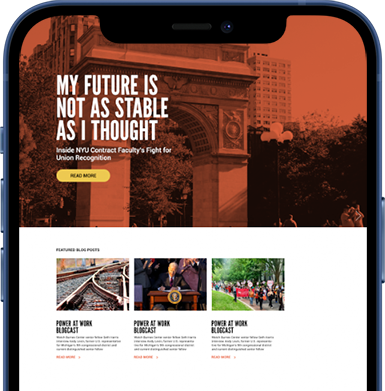This summer has broken records for heat all across the country. From the smoke generated by the Canadian wildfires spreading south, to the sweltering heat wave in Southern states, to the earliest heat advisories on record in New York and Boston, Americans are increasingly concerned for their health. Like other public health issues, the heat affects some groups of people disproportionately. Outdoor workers and workers without air conditioning are particularly vulnerable to heat-related illnesses. Since 2011, there have been 438 work-related deaths caused by extreme heat. Increasing environmental heat exposure is a deadly serious issue for workers.
So, why has the heat been so deadly? The Earth has been steadily warming at a rate of 0.32 degrees Fahrenheit since 1981. Yet, many employers have failed to adjust their labor policies to account for the warming climate. As a result, workers are exposed to dangerous heat hazards at an increasing rate.
One example of workers severely affected by heat is UPS drivers. Until the Teamsters-UPS negotiations this summer, there was no guarantee that UPS trucks would be air conditioned. This year, which is already well on its way to beating 2016 and 2020 to be the hottest year on record, relief from heat is essential. In a viral tweet earlier this year, drivers shared photos of the thermostats inside their vans. They reached temperatures up to 121℉. These unsafe conditions have led to tragedies, such as the collapse and eventual death of a 24-year-old UPS driver in Pasadena, California. His death was believed to have been directly caused by the heat. More incidents like this will occur if there is no immediate change.
Delivery drivers are not the only ones facing the effects of climate change and the lack of protections from employers. In Kansas, summer temperatures rest in the high 90’s and low 100’s. Employees working in the National Beef slaughterhouse find relief from the heat only from fans. To sanitize the equipment, they must handle water heated to 180 degrees, and wear heavy protective gear throughout their shift. It is sweltering in the plant without air conditioning, and the employer isn't making any move to cool the facility, even though it might mean that the food that the workers handle may become contaminated. After workers skin the hides, the workers must ensure there is no debris on the meat. If there is, bacteria could grow and lead to foodborne illness. However, workers' safety glasses can fog up in the extreme heat leading to impaired vision. Exhaustion can also be a factor, as it could make them slower to find foreign matters they would otherwise notice right away. These risks and others have the potential to spread beyond the warehouse as the bacteria on meat that is improperly treated could grow and cause consumers to contract diseases like salmonella and trichinosis. Employees' safety and health in the workplace is important to their lives, but also essential to the health and safety of the public.
Any discussion of the impact of climate change and heat on workers must include farm workers who are on the front lines of this crisis. Farm workers are arguably the most exploited of all outdoor workers. Their ranks include people of all gender identities, ages, and documentation statuses. They are some of our economy’s lowest paid workers, while also among the hardest working. They work in an unfair system that is designed to keep them impoverished and dependent, including by depriving them of union representation in most states. Agricultural practices are rapidly shifting to adapt to the changing climate, but working conditions for the farm workers are not. The unfortunate truth is that the heat-related problems many farmworkers face are severe, but easily solvable. With ready access to water, shade, and rest, which most employers do not provide, farm workers would be able to lower their body temperatures and reduce their risk of heat stress. On top of the limited access to water, shade, and rest, farm workers are often discouraged from taking breaks or stopping to hydrate by their pay system. Many are paid by the piece of fruit or vegetable, for example, which means that they lose pay every time they take a break.
It is completely unacceptable for employers to overlook stressors and illnesses caused by heat. Heat has been the single largest contributor to weather related deaths since 1993. As my colleague Seth Harris wrote in a post on this blog last December, one workplace death is too many. Employers need to step up to protect their employees. But we know that will not just happen. Workers need power to demand their employers protect their right to a safe workplace. In a follow-on post, I will discuss how unions have demanded and won solutions to heat hazards in the workplace. Keep an eye out for that post. Better yet, subscribe to the Power at Work Blog.

